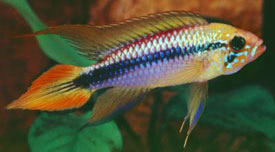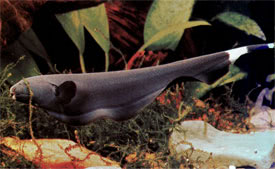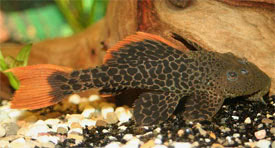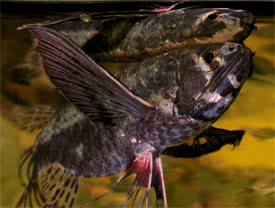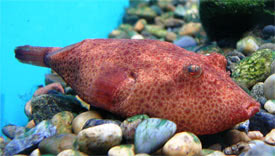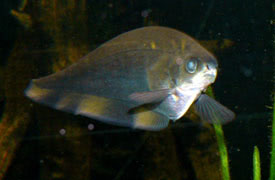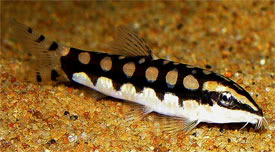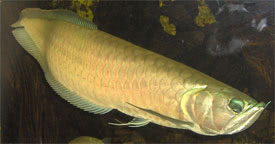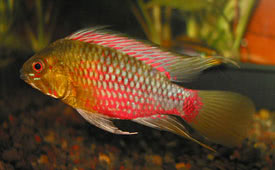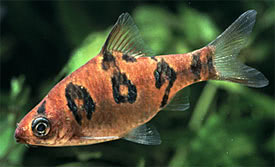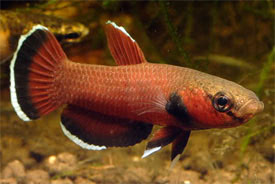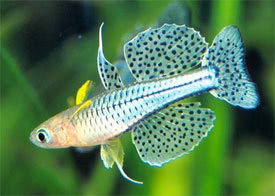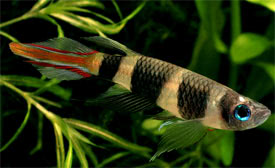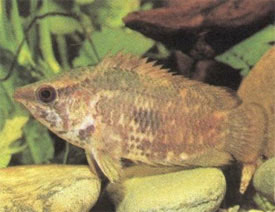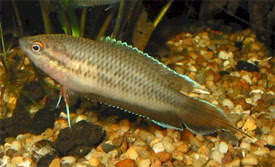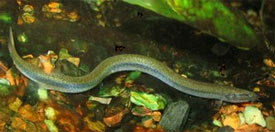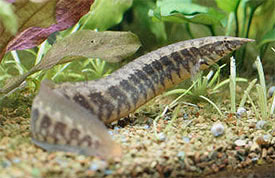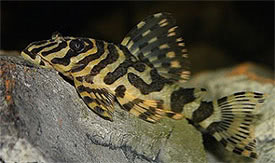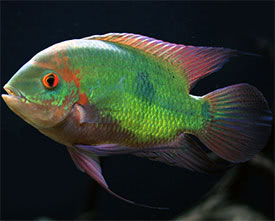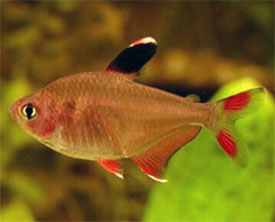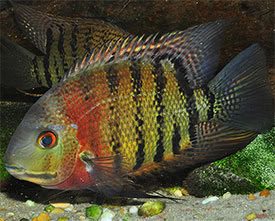
 Magyarul / Hungarian
Magyarul / Hungarian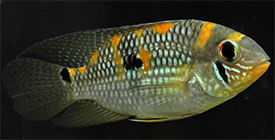


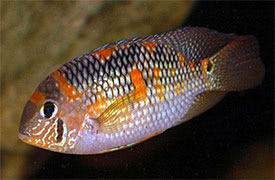
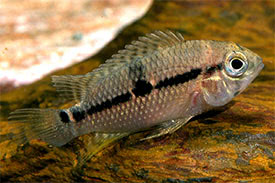
- Scientific name: Aequidens metae
- Synonyms: -
- Common name: Yellow acara
- Group: Cichlids
- Distribution: South America; Colombia
- Size: 12-16 cm
- Biotope: Endemic to the upper Rio Meta river in the Orinoco River basin.
- Social behavior: A tranquil and peaceful cichlid, that can be kept in a community tank with other tranquil fish. They may be a little scrappy during spawning.
- Diet: Omnivorous; Not a fussy eater, it will take all kinds of live, frozen and dried foods in the aquarium, but also like some plant matter, such as spinach and peas.
- Breeding: Quite hard
- Tank: Minimum 160 litres
- Population: 1 pair for 160 litres
- Decoration: Prefers a densely planted aquarium with rocks and roots that make some hiding places for the fish. Also place some flat rocks to the tank that the fish can use as spawning sites. Place some floating plants to the aquarium to dim the lighting.
- Temperature: 24-30 °C
- pH: 5.0-7.0
- Hardness: 1.0-15.0 dGH
- Lifespan: 8-12 years
These fish are very difficult to visually sex with no obvious external differences. Males grow slightly larger and somewhat stouter, while mature females appear to be slightly more rounded in the ventral region.
They have a conspicuous contrasting coloration during spawning and brood care:the eye is a luminescent yellow-orange and the rest of the body, primarlily the opercula, chest and throat is dark. Breeding is quite hard as males are very choosy for a partner. Best to buy a small group of fish, and let them pair up. Spawning can be induced by imitating the rainy season to the fish as they breed during this time in the nature. Lower the water level for a few days and then fill up the aquarium with fresh water and feed the fish with live foods. The female will lay the eggs to horizontal surfaces, and the number of the eggs can vary between 200 and 300. Both parents take care of the fry. The eggs hatch in 2-3 days and after another 2 days the fry become free-swimming. Then you can feed them newly-hatched brine shrimp.
http://www.fishbase.org/summary/Aequidens-metae.html
http://www.malawicichlidhomepage.com/other/aequidens_metae.html
Aquarium Atlas Vol3
http://aquavisie.retry.org/Database/Aquariumfish/Aequidens_metae.html
https://en.aqua-fish.net/fish/yellow-acara

























